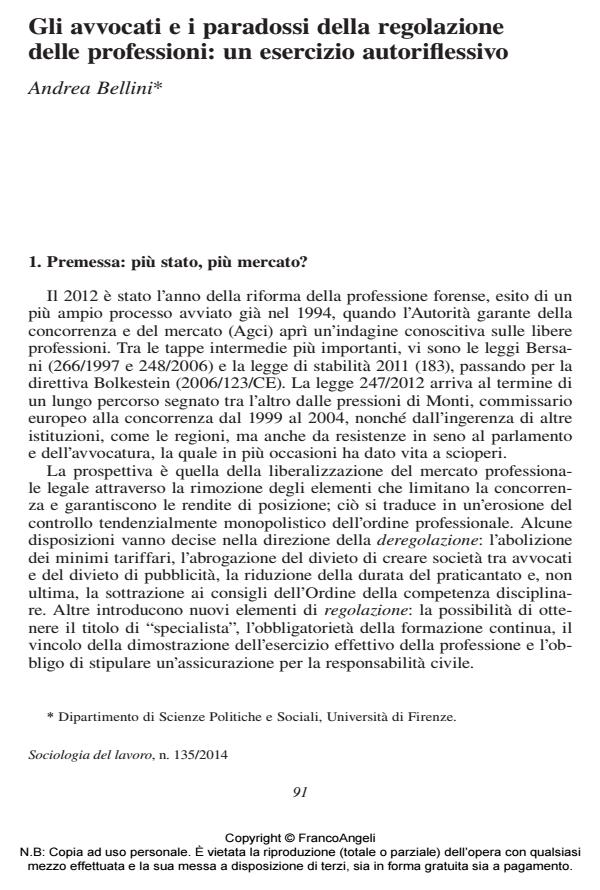Gli avvocati e i paradossi della regolazione delle professioni: un esercizio autoriflessivo
Titolo Rivista SOCIOLOGIA DEL LAVORO
Autori/Curatori Andrea Bellini
Anno di pubblicazione 2014 Fascicolo 2014/135
Lingua Italiano Numero pagine 18 P. 91-108 Dimensione file 153 KB
DOI 10.3280/SL2014-135006
Il DOI è il codice a barre della proprietà intellettuale: per saperne di più
clicca qui
Qui sotto puoi vedere in anteprima la prima pagina di questo articolo.
Se questo articolo ti interessa, lo puoi acquistare (e scaricare in formato pdf) seguendo le facili indicazioni per acquistare il download credit. Acquista Download Credits per scaricare questo Articolo in formato PDF

FrancoAngeli è membro della Publishers International Linking Association, Inc (PILA)associazione indipendente e non profit per facilitare (attraverso i servizi tecnologici implementati da CrossRef.org) l’accesso degli studiosi ai contenuti digitali nelle pubblicazioni professionali e scientifiche
L’articolo illustra i primi risultati di una ricerca sugli avvocati di Firenze. Attraverso un’analisi di focus group con i rappresentanti delle associazioni forensi attive sul territorio, l’autore sviluppa una riflessione sul mutamento del profilo sociale dell’avvocatura. Contestualmente, analizza i problemi di funzionamento dei meccanismi di controllo dell’accesso alla professione e del mercato del lavoro professionale e il ruolo giocato dai principali attori della regolazione.
Parole chiave:Professioni, professionalismo, avvocati, mercati del lavoro professionali, comunità professionale, associazioni professionali
- Frontiere della rappresentanza: potenzialità e limiti organizzativi dell'offerta rivolta ai professionisti indipendenti Paolo Borghi, Guido Cavalca, in SOCIOLOGIA DEL LAVORO 140/2015 pp.115
DOI: 10.3280/SL2015-140008 - Oltre la difesa. Quando gli avvocati di mafia oltrepassano il mandato professionale Ombretta Ingrascì, in SOCIOLOGIA DEL DIRITTO 1/2021 pp.41
DOI: 10.3280/SD2021-001002
Andrea Bellini, Gli avvocati e i paradossi della regolazione delle professioni: un esercizio autoriflessivo in "SOCIOLOGIA DEL LAVORO " 135/2014, pp 91-108, DOI: 10.3280/SL2014-135006